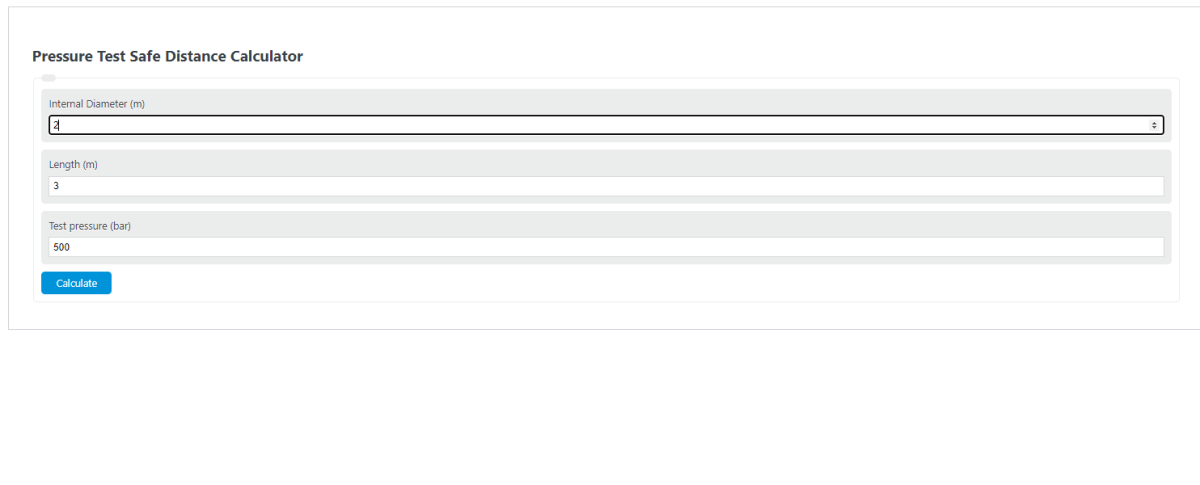Enter the internal diameter, length, and test pressure into the calculator to determine the pressure test safe distance.
- All Distance Calculators
- Pressure to Thrust Calculator
- Hoop Stress Calculator
- Pipe Pressure Rating Calculator
- Rupture Disk Burst Pressure Calculator
Pressure Test Safe Distance Formula
The following formula is used to calculate the safe distance required for a pressure test.
SD = .15*D*(a)^{.4}*(p)^{.6}- Where SD is the safe distance (m)
- D is the internal diameter of the vessel (m)
- a is the length of the vessel (m)
- p is the test pressure (bar)
What is a Pressure Test Safe Distance?
Definition:
A Pressure Test Safe Distance is a minimum distance that humans should have spaced between them and a pressure vessel undergoing a pressure test.
The formula above is provided by ASME.
How to calculate Pressure Test Safe Distance?
Example Problem:
The following example outlines how to calculate a Pressure Test Safe Distance.
First, determine the internal diameter. In this case, the internal diameter is 2m.
Next, determine the length. For this problem, the length of the vessel is measured to be 3m.
Next, determine the test pressure. This is predetermined to be 500 bar.
Finally, calculate the Pressure Test Safe Distance using the formula above:
SD = .15*D*(a)^.4*(p)^.6
SD = .15*2*(3)^.4*(500)^.6
SD = 19.37m
FAQ
What is the importance of calculating the Pressure Test Safe Distance?
Calculating the Pressure Test Safe Distance is crucial for ensuring the safety of personnel and equipment during pressure testing of vessels. It helps in determining a safe perimeter to prevent injuries or damages in case of a vessel failure.
Can the Pressure Test Safe Distance formula be used for any type of pressure vessel?
The formula provided is a general guideline and can be applied to various types of pressure vessels. However, specific vessel designs or testing conditions may require adjustments or the use of more specific formulas as per relevant engineering standards.
How does the test pressure affect the calculated safe distance?
The test pressure directly influences the calculated safe distance, with higher pressures resulting in a larger safe distance. This is because the potential energy released in case of a failure increases with pressure, necessitating a larger safety margin.
